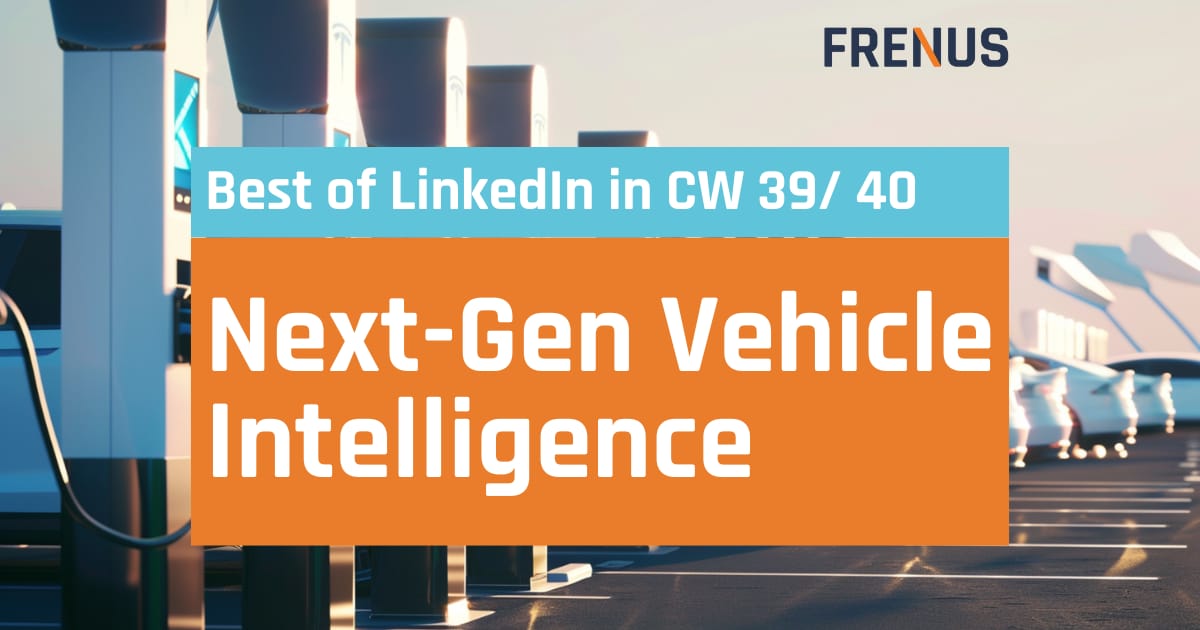Methodology: Every two weeks we collect most relevant posts on LinkedIn for selected topics and create an overall summary only based on these posts. If you´re interested in the single posts behind, you can find them here: https://linktr.ee/thomasallgeyer. Have a great read!
SDV and E/E architecture
Shift from ECU sprawl to zonal and centralized compute progressed, with clear calls for modular, open, cloud-integrated architectures.
OEM voices prioritized software ownership over turnkey stacks to protect flexibility and revenue optionality.
Industry leaders framed SDV not as a software veneer but as a long-term transformation of E/E, data, and lifecycle operations.
ADAS and autonomous
Strategically significant decisions on automated driving “superbrains” highlighted a preference for scalable, power-efficient compute that OEMs can control.
OEM perspectives connected ADAS choices to broader SDV roadmaps, avoiding lock-in and enabling feature rollouts across the portfolio.
Discussions linked ADAS progress to customer-visible comfort and safety enhancements, not just technical milestones.
Connectivity and cockpit
Posts underscored the cockpit as a software battleground, with OS selection and app ecosystems shaping differentiation.
Cloud hooks and OTA paths were treated as native requirements for feature delivery, data feedback loops, and monetization.
Cybersecurity and regulation
Cybersecurity Awareness Month content reinforced the operational reality of UNECE R155/R156 and ISO practices.
Emphasis moved beyond compliance to continuous, IT-plus-OT defense, spanning bootloaders, OTA, and secure development.
Testing and validation
Validation scaled toward integrated, modular systems spanning SIL, HIL, and vehicle-level test orchestration.
Example platform narratives showcased reusable assets, cross-system automation, and earlier defect discovery to compress cycles.
Scenario-driven validation and traceability were positioned as prerequisites for safe ADAS releases and regulatory evidence.
Semiconductors and compute platforms
Compute choices surfaced as strategy decisions, not just specs, tying SOC roadmaps to energy efficiency, scalability, and supplier leverage.
Ecosystem content highlighted enduring roles for foundational OS and middleware layers used across multiple OEMs and Tier-1s.
Manufacturing and supply chain
European posts acknowledged competitive pressure and advocated faster software execution, data utilization, and organizational change.
Contributors emphasized aligning hardware cadence with software release trains and building supplier networks that support SDV velocity.
Partnerships and deals
Joint venture analyses encouraged nuanced reading of conditional commitments and stepwise collaboration.
Open collaboration gained visibility through community projects and consortia intended to reduce duplicate effort and accelerate baselines.
Multiple posts framed partnerships as targeted capability boosts while preserving OEM platform sovereignty.
Energy and charging
Battery packaging and cell technology appeared as enablers for platform range and performance, reinforcing the link between energy systems and SDV value delivery.
Want to see the posts voices behind this summary?
This week’s roundup (CW 39/ 40) brings you the Best of LinkedIn on Next-Gen Vehicle Intelligence:
→ 6 handpicked posts that cut through the noise
→ 35 fresh voices worth following
→ 1 deep dive you don’t want to miss

